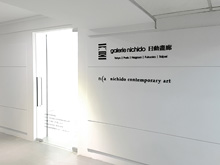Exhibitions
Kazuya Sakamoto: Symbiosis

2018.04.14-2018.06.02
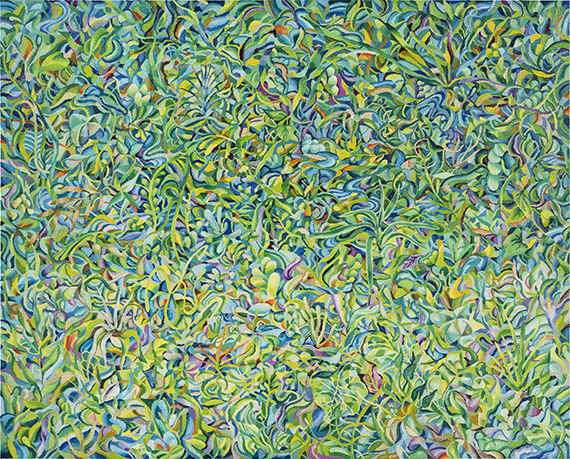
Dates|2018. 04. 14 - 2018. 06. 02
Opening Reception|2018. 04. 14 15:00
Venue|台北日動畫廊 galerie nichido Taipei
galerie nichido Taipei is pleased to present “Symbiosis”, the first solo exhibition of Japanese artist Kazuya Sakamoto. Born in a place surrounded by nature, Kazuya Sakamoto describes his choice of depicting waterweeds as a necessity, and as an act to question his own raison d'etre.
Since his first visit to Taiwan in 2015, Kazuya Sakamoto has been interested in the culture, nature, and the historical interaction between Japan and Taiwan. The abundant plant species nurtured due to Taiwan's unique climate also made a great impression on the artist, who continues to use "water weeds" as his main creating motif. He received the fund from The Japanese Government Agency for Cultural Affairs Program of Overseas Study as one of the twenty young creators to study abroad for his promising talent as well as the close connection between his work and the location (Taiwan) he chose. With the support of many local art professionals, Sakamoto started his one year life in Taiwan with a personal studio in Polymer since last September.
This exhibition will show his most recent works created in Taiwan, with an article written by Daisuke Miyatsu, art collector and professor at the Yokohama College of Art and Design. The exhibition title “Symbiosis” means a relationship between two types of animal or plant in which each provides for the other the conditions necessary for its continued existence, or a relationship between people or organizations that depend on each other equally. Similarly, the plants that intricately intertwine in Sakamoto’s paintings, combined with the thick application of the paints, also probe into the various manifestations of the links of lives. We sincerely invite all guests to enter a lush universe created by the artist and explore how the artist implements his artistry to communicate other possible expressions with regards to time and space in contemporary painting.
---
The Possibility of Japanese Animism: Waterweeds as Microcosms
Text/ Daisuke Miyatsu (Art Collector)
In recent years, Sakamoto has been painting a thriving micro-universe based on the aquarium located in his studio. Within this aquarium, fishes breathe in oxygen and expel carbon dioxide, which is then absorbed by the waterweeds to generate oxygen through the process of photosynthesis. Simultaneously, the animal wastes are broken down by microorganism and transformed into nutrients for the plants. Such kind of mutual symbiosis has been the circle that sustains this ecosystem.
At the moment, there are countless international conflicts and terror attacks occurring throughout the world. These deep rifts are the results of inequalities with regards to religious ideologies, ethnicity, and race. It is the failure to accept other people’s differences, and the lack of tolerance and capability to live in harmony that has brought us to these conundrums. Clearly, the traditional monotheistic beliefs have played an essential role. After all, is it not the over development of Capitalism equal to a monotheistic faith worshipping material goods while denying other values? On the contrary, Japan has long believed in animism since ancient times. Whether it is gods, fairies, or spirits, people highly respect all deities and share a common belief system that can be summed up with the term “Yao Yorozu no Kami (eight million gods)” meaning that there are countless number of gods.
Looking farther beyond our planet, Soviet cosmonaut Yuri Gagar, the first human to travel in outer space on the spaceship Vostok 1, simply declared that: “the Earth was blue”, and that he “looked and looked but didn't see God”. Another astronaut also recalled that “when looking at the earth from outer space, there is no such thing as national boundaries”. Both men were struck by the strong sense of beauty coming from this blue planet, as the awareness that that is our biosphere affects, to varying degrees, our perception.
If we review Sakamoto’s works keeping in mind the aforementioned thoughts, we shall notice that his works are not merely about waterweeds. Instead, they represent the microcosms from a holistic view, as if human beings were glancing back at the earth from outer space. This is clear also in some of his earlier works such as A Chromosome Map(image 1), long before his waterweed creations, where he experimented with and explored through a trial and error process works that dealt with the cosmos issues as their main theme.
The artistic effect in Sakamoto’s works characterized by intense, heavy, and even distorted brushstrokes, a style that reminds us of Vincent van Goh, conveys to his artistic world a unique sense of existence. While covering up the canvas, a rhythmic pattern, as music reaching our ears, evokes Yayoi Kusama’s Infinity Nets, Ogata Kourin’s Kakitsubata-zu, or Suzuki Kiitsu’s Asagao-zu (Morning Glory, image3) to name a few. Furthermore, his representation of microcosms, far from being a simple pursuit based on relentless scales or visual tensions but rather a pictorial language in itself bursting with wit and modesty, evokes, too, the concept of Genpei Akasegawa’s “The Can of Universe”*1.
When Van Gogh managed to break away from the restrictions of Impressionism and created his own artistic universe, he once wrote that “even though we all reside in a comfort zone, studying and working under the old norms, human beings need to return to the essence of nature eventually”. Vincent van Gogh had entrusted this wish to “Japanism” and “Japanese”*2. Furthermore, through his works, we can understand how he was also deeply influenced by Jean-François Millet’s The Gleaners(image 4), and Hiroshige Utagawa’s Plum Park in Kameido(image 5)*3.
After 130 years, Sakamoto takes Japanese animalism as his foundation, and presents the eco-system’s microcosms by using brushstrokes as energetic as those of Van Gogh. His paintings show us the way to break free from the norms of Capitalism and Globalism, and further exceed the boundaries of fixed values. In other words, in an age full of endless conflicts, and an era where technology keeps evolving at a ever-drastic pace, Sakamoto’s works are like humanistic hymns of “utopia”, overflowing with colors of hope.
*1:“I started to think about how to wrap up the universe, and took action. I first bought a can, used the opener to open up the top, and took out all the contents. Then I washed and dried the empty can. Afterwards, I tore down the can label on the outer side of the body, re-applied the adhesive paste, andglued the label again but this time into the inner side of the body. Lastly, I closed the seal and finished the final welding process. At the moment, it is as if our universe is like the inner side of the can, sealed within.” Akasegawa, Genpei ,“The Principles of Art”, Iwanami Shoten, Publishers., 1988, pp. 156
*2: Koudera, Tsukasa,“Van Gogh – The Battle between Nature and Religion”, Shogakukan Inc., 2009
*3: "Impressionist Masterpieces from the E.G. Buehrle Collection, Zurich” Exhibition Catalogue, 2018, pp. 160-161
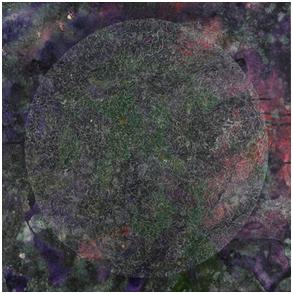
圖1 image 1
A Chromosome Map
坂本和也 Kazuya Sakamoto
2011, acrylic on canvas, 53 x 45.5cm
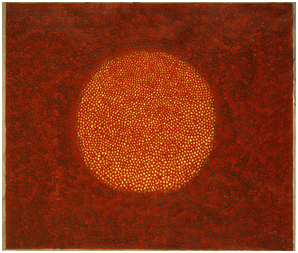
圖2 image 2
無盡的網 Infinity Nets
草間彌生 Yayoi Kusama
1965, oil on canvas, 132 x 158cm
Collection of Daisuke Miyatsu
©Yayoi Kusama Courtesy of Ota Fine Arts, Tokyo and Singapore
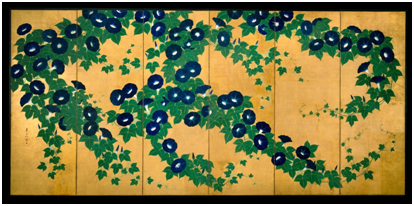
圖3 image 3
朝顔圖屏風Morning Glories
鈴木其一 Kiitsu Suzuki
Early 19th century, Pair of six-panel folding screens: ink, color, and gold leaf on paper
178.3 x 379.7cm each
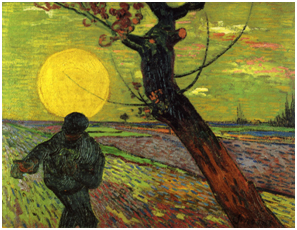
圖 4 image 4
Sower with Setting Sun
文森‧梵谷 Vincent van Gogh
1888, oil on canvas, 73 x 92cm
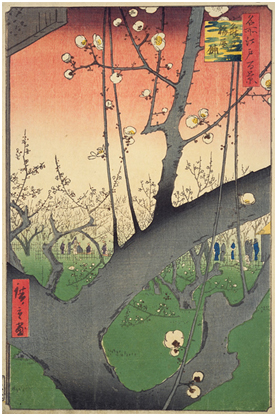
圖5 image 5
Kameido Umeyashiki (Plum Park in Kameido)
歌川廣重 Hiroshige Utagawa
1857, Color Woodblock Prints
Gallery
